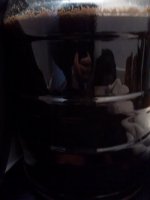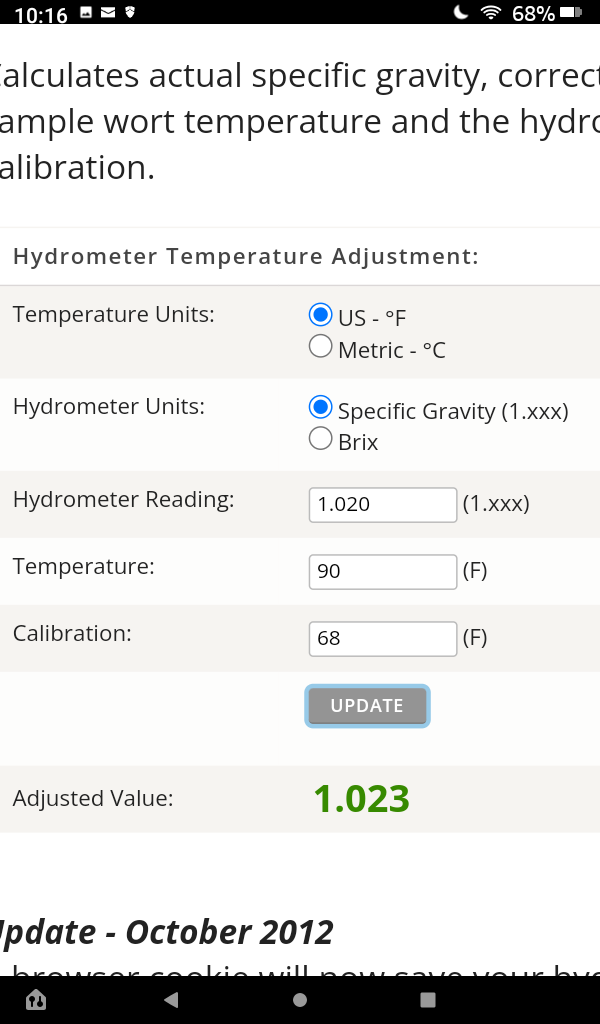zinn
Well-Known Member
- Joined
- Nov 4, 2013
- Messages
- 61
- Reaction score
- 18
This is my second attempt at all-grain brewing. I used Nottingham High Performance Yeast for my all-grain porter. I pitched it at about 68 degrees and it's sitting in a carboy at about 64 degrees. Fermentation kicked off within roughly 24 hours. Good, solid krausen.
However, when I checked the carboy the next morning, the krausen was gone. With the exception of a couple of tiny bubbles at the top that appear every so often, there's no activity. About an inch of sludge has formed at the bottom of the carboy.
My first attempt at all-grain brewing was a pumpkin ale using Safale-05. With that batch, I had a solid krausen and bubbling for several days in the carboy.
Given the disparity between these two batches, I'm a little worried the Nottingham isn't working properly. Is there any way to know for sure?
I attached a couple of admittedly awful pictures.
However, when I checked the carboy the next morning, the krausen was gone. With the exception of a couple of tiny bubbles at the top that appear every so often, there's no activity. About an inch of sludge has formed at the bottom of the carboy.
My first attempt at all-grain brewing was a pumpkin ale using Safale-05. With that batch, I had a solid krausen and bubbling for several days in the carboy.
Given the disparity between these two batches, I'm a little worried the Nottingham isn't working properly. Is there any way to know for sure?
I attached a couple of admittedly awful pictures.












![Craft A Brew - Safale BE-256 Yeast - Fermentis - Belgian Ale Dry Yeast - For Belgian & Strong Ales - Ingredients for Home Brewing - Beer Making Supplies - [3 Pack]](https://m.media-amazon.com/images/I/51bcKEwQmWL._SL500_.jpg)


















































